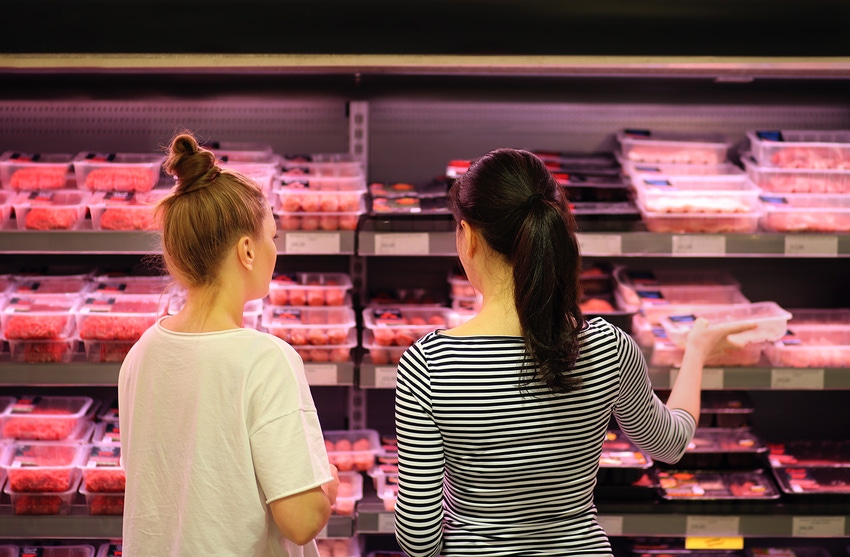Foodborne outbreaks linked to pork, such as human trichinella cases — a major concern 50 to 80 years ago in the United States — is no longer an issue.

Last week was parent-teacher conferences week for our household. While it can be kind of a pain to schedule and sometimes a dreaded event, I actually enjoy hearing how my daughter is doing and what she needs to work on. It’s very constructive feedback, and if you haven’t had to do a parent-teacher conference lately, a lot has changed. In fact, my seventh-grader conducted the whole thing in front of her homeroom teacher and us, and went over each course, the progress she has made, what she could do better and goals for next quarter. I like it because I think it makes students have some “skin in the game” and holds them accountable.
That parent-teacher conference popped up in my mind again this past week after hearing Peter Davies, a professor at the University of Minnesota, speak at the National Institute for Animal Agriculture’s 8th Annual Antibiotic Symposium. The reason why? Maybe it’s time we held consumer-swine conferences.
“As the industry gets better, perceptions get worse and on the other side societal industry evolutions create new problems,” Davies says. “We sort of have these two forces on us as the industry evolves that are going to pressure the direction of the industry as to what is acceptable and what is not acceptable.”
It’s the paradox of progress, Davies says.
“As we move forward as a society, we create more problems,” Davies says. “Higher economic growth and consumerism leads to more stress, people work more, society falls behind. The better things become, the worse they are perceived. The more we know, the more we have to discover.”
Perhaps a consumer-producer check-in every now and then may help. After all, most consumers probably don’t realize the progress the industry has made in the last 40 years.
In 1978, the USDA was detecting violative residues in market hogs at levels such as 5.6% for antibiotics and 9.7% for sulfonamides. By 2016, out of 800 random samples, market hogs had no violative residues and even during inspector-generated samples, only four (0.02%) violative resides were detected out of 18,754 samples.
Davies says it is phenomenal progress, but no one ever talks about it.
According to the Center for Disease Control data, the meat industry overall has reduced the incidence of key foodborne pathogens relative to 1996 to 1998. There’s been a 20 to 30% reduction in listeria, campylobacter and Shiga toxin-producing E. coli, a 50% reduction in Yersinia (in pork production), and salmonella has remained stable. Davies says the reductions seen are at least partly attributable to better processing hygiene since the Hazard Analysis and Critical Control Point Act in 1996.
“Our meat industry product evidence suggests they have gotten safer over the last 20 years rather than more dangerous,” Davies says. “That doesn’t often get communicated and I’m sure if you polled the average consumer that sits next to you on the plane they wouldn’t realize that.”
We’ve also improved pork safety. Foodborne outbreaks linked to pork, such as human trichinella cases — a major concern 50 to 80 years ago in the United States — is no longer an issue. Toxoplasma, with current production practices, is at a very low level now in market hogs. The detection of salmonella on swine carcasses monitored by the USDA Food Safety and Inspection Service was 8.6% in 1994, but has dropped to around 1% at larger plants over many years.
“Does the consumer need to know this? Does the consumer want to know this?” Davies asks. “It’s this issue of perceptions of where the industry is going that may be clashing a little bit with the reality of some important measurable attributes of where the industry is at.”
When it comes to antimicrobial resistance, Davies says we need to look at what really matters to consumers when it comes to what the food animal industry is doing.
“How are we using antibiotics in food animals? What is effective? What is necessary? What’s philosophically defensible?” Davies says. “Growth promotant usage, even if it was doing no harm, is not philosophically defensible in our country or internationally at the moment so regardless of what it is doing it not something we can defend, and we will have pressure on some of our other uses.”
Davies says the most important thing the animal industry needs to do is to quit debating on how much we do or don’t do, but instead focus the conversation on how we are doing things better. After all, the industries are moving forward because they recognize it’s an important area for progress.
Finally, when it comes to food safety, consumers should recognize they have just as much “skin in the game.” Outbreak statistics show there are still a lot of issues coming from improper storing, handling and cooking meat.
“It’s a very delicate path to walk down, to remind consumers that actually in the in farm to fork continuum, they have responsibilities too,” Davies says.
About the Author(s)
You May Also Like





